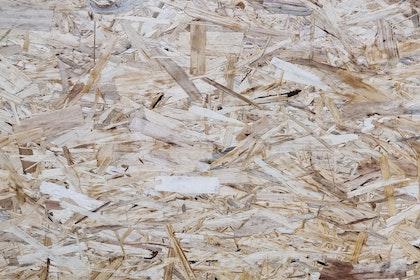How is Chipboard Made?
Chipboard is a common material used in building and construction. You might have seen it as a flat-packed furniture item or hidden under a veneer in your kitchen cabinet.
But what exactly is chipboard? And how is it made?
As a leading supplier of chipboard across London, Hitchcock & King is here to explain everything you need to know about chipboard.
What is Chipboard?
Put simply: chipboard is an engineered wood product. Composed of wood chips, sawmill shavings and even wood dust, this material is glued together to form sheets. Yes, you read that right — chipboard sheets are essentially a melting pot of various wood residues. The beauty of this is that it’s a product of recycling; your waste wood finds a second life in chipboard.

What are the Uses of Chipboard?
There are various uses for chipboard, including:
-
Furniture Making
The affordability of chipboard makes it a common material for IKEA-esque furniture.
-
Flooring
You can often find chipboard lurking beneath laminates and veneers.
-
Roofing
A structural asset, chipboard even finds use in roofs
-
Packaging
Chipboard is thicker and sturdier than standard cardboard, making it a great choice for protective packaging.
How is Chipboard Made?
The journey from discarded wood scraps to a versatile building material is nothing short of fascinating.
Step 1: The Materials and Pre-treatment
To kick things off, raw materials like wood chips, shavings and sawdust are collected. The materials are often sourced from sawmills or recycled wood waste. These are then meticulously sorted and cleaned. Sometimes, they undergo a pre-treatment to get rid of any unwanted elements, ensuring the board is strong and sturdy.
Step 2: Chipping, Drying and Screening Process
The wood is first chipped into smaller pieces. Next comes drying, where it is aerated to remove moisture. This is followed by screening to sift out the undesirable sizes and grades.
Step 3: Gluing and Creating the Board
A good adhesive is like the bass line in a rock song — it’s what holds everything together. It is at this stage that a resinous glue is added to the wood mix, and then the entire concoction is formed into a mat. A ‘mat’ in this context is a pre-compressed layer of wood particles mixed with adhesive, set to be pressed into a solid board. It’s the intermediary step between loose wood material and the final chipboard product.
Step 4: Pressing
This mat then goes through a hydraulic or mechanical press. The pressing stage is where the mat transforms into an actual board.
Step 5: Post-treatment
Lastly, the boards may be sanded for that smooth finish or coated with a sealant. Then, your chipboard is ready to be shipped off, possibly to one of the many Hitchcock & King locations around London for you to buy.
Whether you’re a seasoned builder or a weekend DIY enthusiast, make Hitchcock & King your first stop for all your chipboard wood needs in London. Need chipboard sheets? We have them. Need specialised chipboard? We have that too.
So the next time you need chipboard, contact Hitchcock & King, London’s favourite builders merchant.
